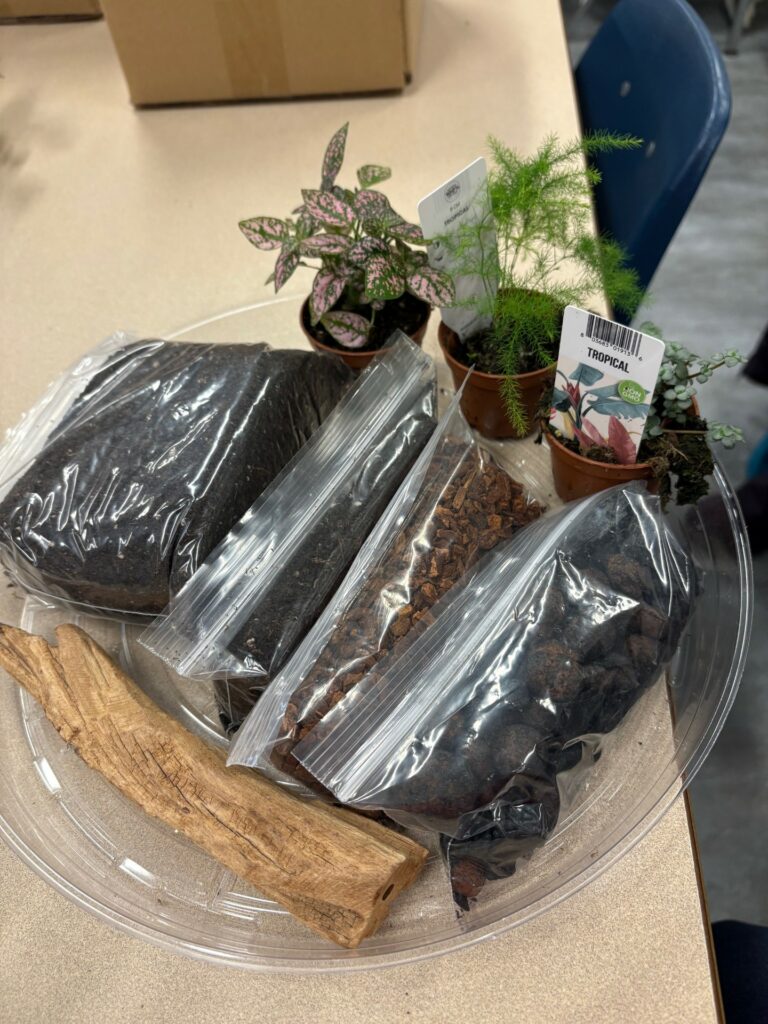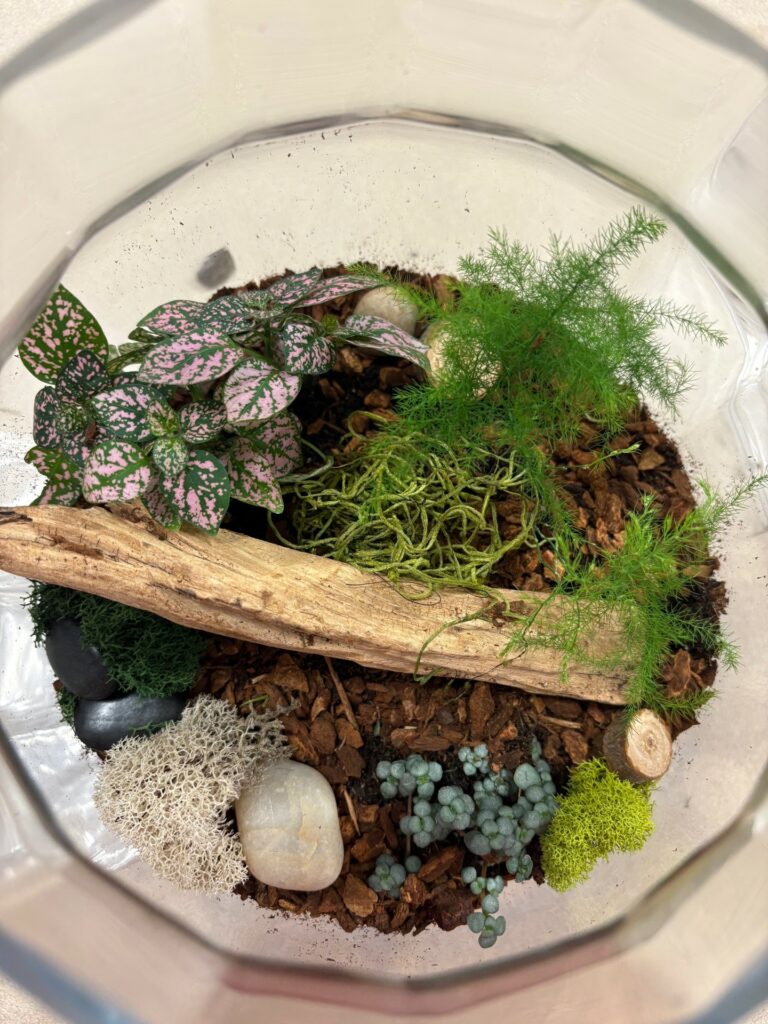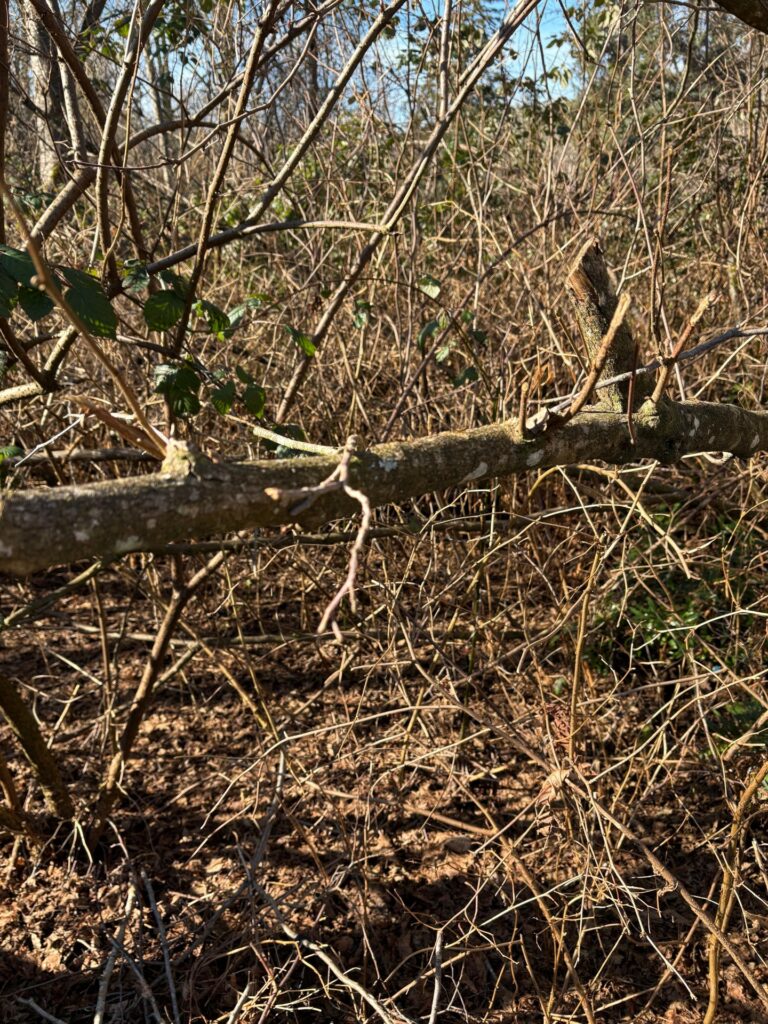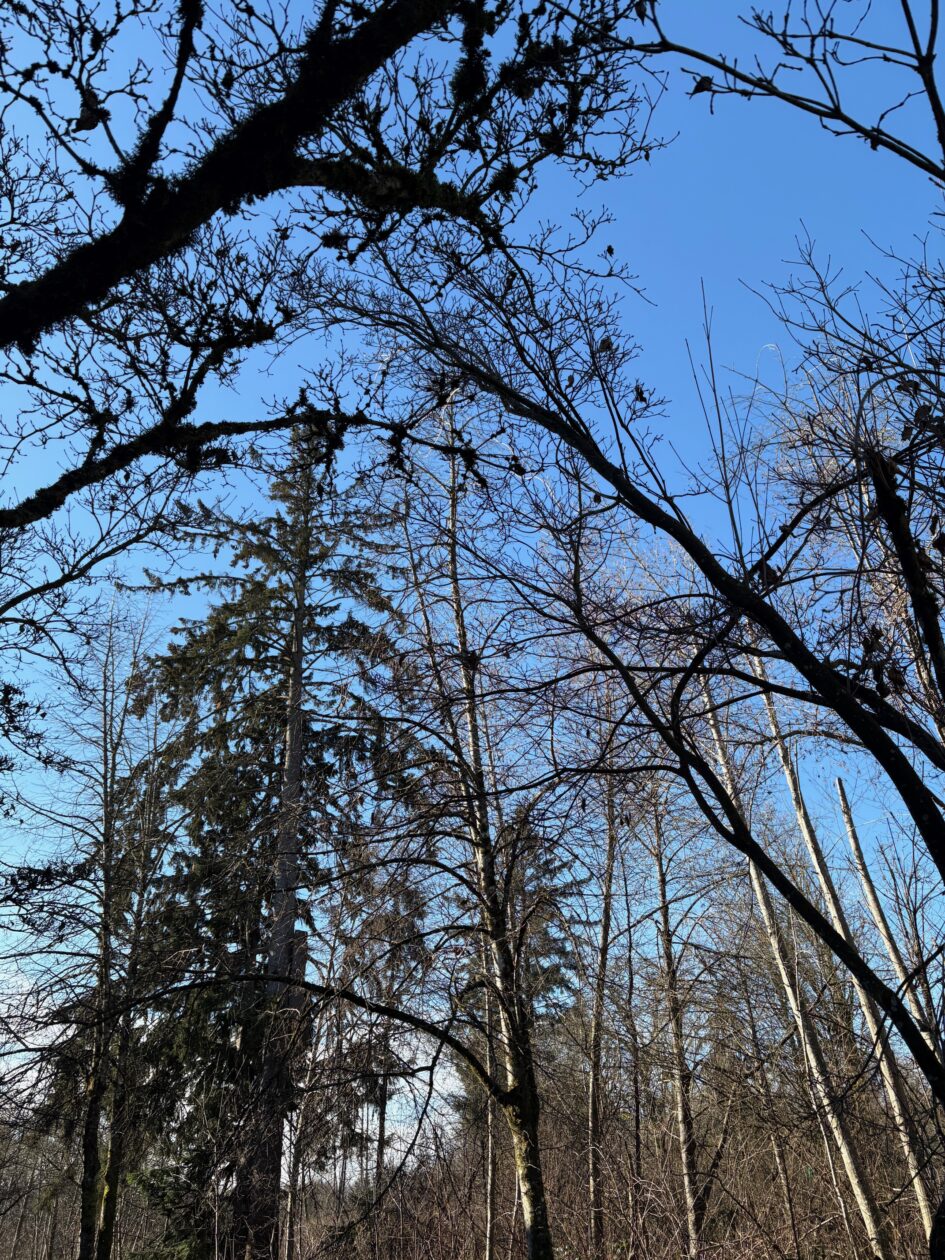Interestingly, although Coquitlam Continuing Education is part of School District 43, we have a different contract from the K-12 teachers. One of the key differences is that, as adult educators, we only get one ProD day per year, and that is the CTA ProD which occurs at the end of February. This year the sessions were held at Riverside Secondary School in Port Coquitlam.
Session A – The Inclusive Outdoor Classroom
I was drawn to this session for two reasons. One: Kati and I have been focused on the Inclusive Design for Learning Framework, and now every time I hear the word ‘inclusive’ I begin comparing whatever situation it is to what I have been learning. And two: in the program that I work in, we are required to do monthly field trips, without a lot of funds to do them with. Therefore, we often end up doing free things like nature walks. So, I thought learning about outdoor classroom techniques would be a good idea.
The session was led by one of the teachers and program director, Tricia Edgar, at a school called Fresh Air Learning, located in North Vancouver. They offer different programs from blended home learning to special camps for ages 2.5-15 years old. The forest school programs feature:
- Play-based nature education for children to explore, create, and learn in a forest environment.
- Activities include mud kitchens, balancing games, climbing, and seasonal nature exploration.
- Focus on physical growth, resilience, social-emotional learning, and connection to the land.
I really like the connection to the land piece. This is something that I can transfer to my adult learners. Mud kitchens….. maybe not!
Part of the workshop was outside. Tricia had some resources and asked us to look at them, think of an activity inspired by the resource, and then how it could be made more inclusive for different learners. My partner and I had a book called Botany For All Ages: Discovering Nature Through Activities for Children and Adults by Jorie Hunken, and we were drawn to an activity about leaf art. My partner immediately remembered an Instagram post she saw that used dried autumn leaves as the base, and then the artist draws insects or animals from the basic leaf. Something like the video below.
When Tricia came by, she suggested an inclusive element to this leaf art could be what she called hapazome which she said means leaf smashing in Japanese. I know that hapa means leaf in Japanese and I checked out zome – which is actually adding color to something. Tricia said that if some children struggle with the fine-motor skills required to draw, she has them smash leaves to make art – the colour or imprint from the colours in the leaves will transfer to cloth or paper. Smashing! When I got a chance, I began thinking of how this activity could fit the Inclusive Design for Learning Framework.
Three Dimensions of Inclusive Design and Smashing Leaves:
- Recognize Diversity and Uniqueness:
- This activity caters to individual creativity and unique expression. Each participant will produce distinct, one-of-a-kind leaf art based on the leaves they choose, the pressure they apply, and their artistic interpretation.
- It is accessible to people of various skill levels and abilities, allowing everyone to participate and adapt the activity to their preferences or needs.
- Inclusive Process and Tools:
- Leaf smashing can involve diverse participants in a shared experience. For instance, children, parents, educators, and even individuals with disabilities can take part together, fostering collaboration and mutual learning.
- The activity uses simple, low-cost tools (like leaves, paper, and hammers/rocks), ensuring inclusivity by reducing financial barriers and accommodating different communities.
- Broader Beneficial Impact:
- This practice connects participants with nature, encouraging a broader appreciation for the environment and sustainability.
- The simplicity and joy of the activity can positively influence mental well-being and inspire future creative endeavors that are similarly inclusive and resourceful.
By framing this seemingly simple activity within the inclusive design principles, it becomes a meaningful and transformative process that celebrates diversity while fostering creativity.
Session B – Tropical Terrariums


This session was put on by two very knowledgeable instructors from Gardenworks in Coquitlam. I took this one purely for the reason that I like to create things. I usually take workshops like needle felting, soapstone carving, making bees wax wraps, the list goes on, and now includes tropical terrarium.
A few teachers in our LINC program have taken students to Gardenworks on field trips before – but space is limited. I asked the instructors if they would be able to design a DIY terrarium that could be done in the classroom and they thought they could. This would be a great following instructions activity for listening and reading. Definitely a good activity for adult learners.
Three Dimensions of Inclusive Design and Tropical Terrariums:
- Recognize Diversity and Uniqueness:
- Every terrarium can be uniquely tailored to reflect the builder’s preferences, abilities, and style. From choosing plants to arranging decorations, each individual can create something that resonates with their vision.
- This activity accommodates diverse participants, as it can be simplified or expanded based on skill level, physical abilities, or available resources. For example, someone with limited dexterity can focus on fewer components, while others might enjoy adding intricate design elements.
- Inclusive Process and Tools:
- Creating a terrarium can be a collaborative effort, bringing together people of different backgrounds, abilities, and ages. Group efforts ensure that diverse ideas and approaches contribute to the final creation.
- The materials and tools needed—glass containers, soil, plants, and decorations—are generally accessible and affordable. Additionally, substitutions can be made based on the participants’ resources, making the activity welcoming to all. The terrarium I made at ProD was 60$, but the instructors said they could put one together for less.
- Broader Beneficial Impact:
- Building and caring for a tropical terrarium fosters a connection with nature, promoting mindfulness, mental well-being, and environmental awareness.
- Participants might be inspired to engage in more sustainable practices or further explore inclusive, hands-on activities that bring people together.
Terrarium design could be an inclusive experience that accommodates individuality, encourages collaboration, and creates lasting benefits for participants. I just hope I’m able to keep mine alive, as I do not normally have a green thumb…
Although adult educators in SD43 only get this one ProD each year, it is much appreciated. I always enjoy the sessions and reflecting on not only how I can use what I learn with my ELLs but also how it feels to be an adult learner myself.


Recent Comments